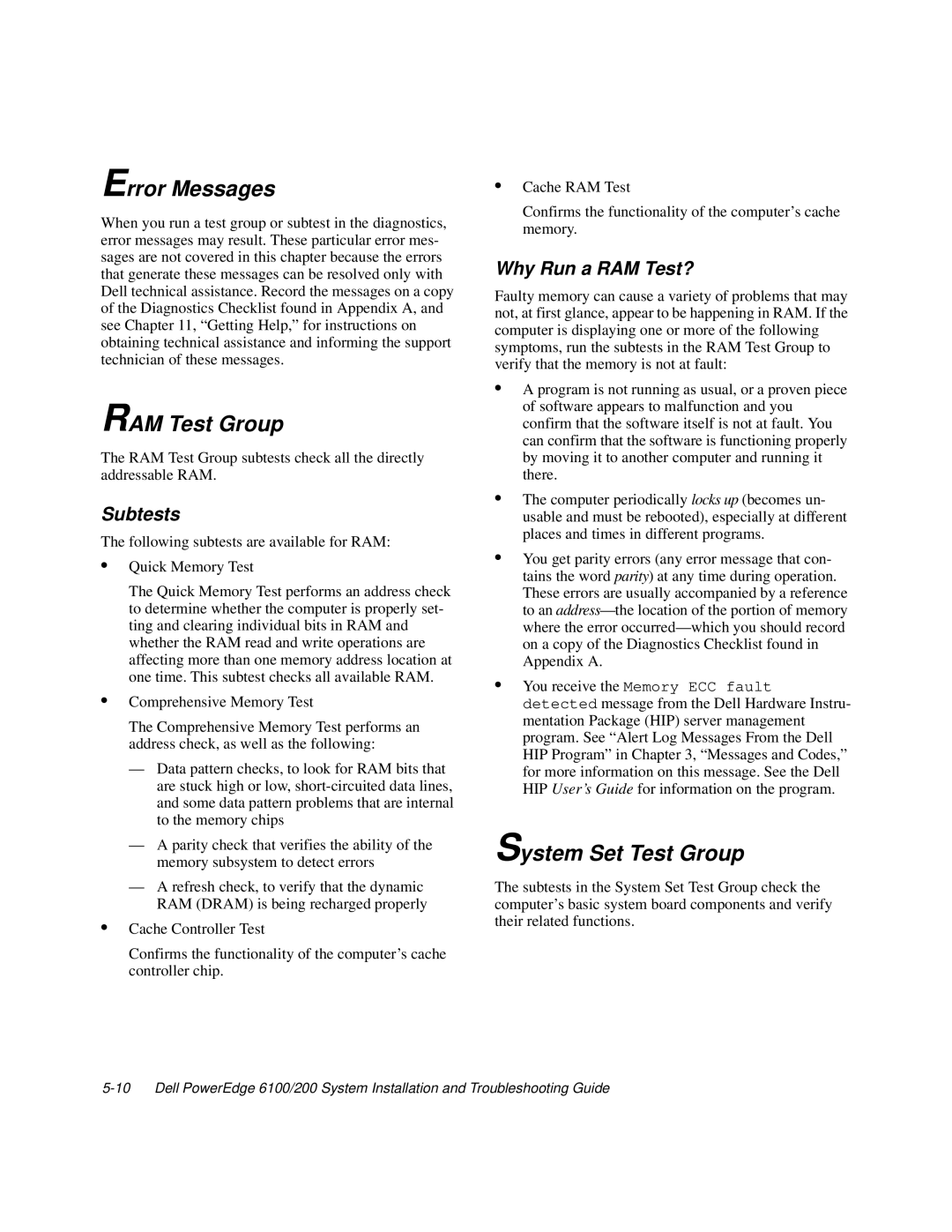Error Messages
When you run a test group or subtest in the diagnostics, error messages may result. These particular error mes- sages are not covered in this chapter because the errors that generate these messages can be resolved only with Dell technical assistance. Record the messages on a copy of the Diagnostics Checklist found in Appendix A, and see Chapter 11, “Getting Help,” for instructions on obtaining technical assistance and informing the support technician of these messages.
RAM Test Group
The RAM Test Group subtests check all the directly addressable RAM.
Subtests
The following subtests are available for RAM:
•Quick Memory Test
The Quick Memory Test performs an address check to determine whether the computer is properly set- ting and clearing individual bits in RAM and whether the RAM read and write operations are affecting more than one memory address location at one time. This subtest checks all available RAM.
•Comprehensive Memory Test
The Comprehensive Memory Test performs an address check, as well as the following:
—Data pattern checks, to look for RAM bits that are stuck high or low,
—A parity check that verifies the ability of the memory subsystem to detect errors
—A refresh check, to verify that the dynamic RAM (DRAM) is being recharged properly
•Cache Controller Test
Confirms the functionality of the computer’s cache controller chip.
•Cache RAM Test
Confirms the functionality of the computer’s cache memory.
Why Run a RAM Test?
Faulty memory can cause a variety of problems that may not, at first glance, appear to be happening in RAM. If the computer is displaying one or more of the following symptoms, run the subtests in the RAM Test Group to verify that the memory is not at fault:
•A program is not running as usual, or a proven piece of software appears to malfunction and you confirm that the software itself is not at fault. You can confirm that the software is functioning properly by moving it to another computer and running it there.
•The computer periodically locks up (becomes un- usable and must be rebooted), especially at different places and times in different programs.
•You get parity errors (any error message that con- tains the word parity) at any time during operation. These errors are usually accompanied by a reference to an
•You receive the Memory ECC fault detected message from the Dell Hardware Instru- mentation Package (HIP) server management program. See “Alert Log Messages From the Dell HIP Program” in Chapter 3, “Messages and Codes,” for more information on this message. See the Dell HIP User’s Guide for information on the program.
System Set Test Group
The subtests in the System Set Test Group check the computer’s basic system board components and verify their related functions.
